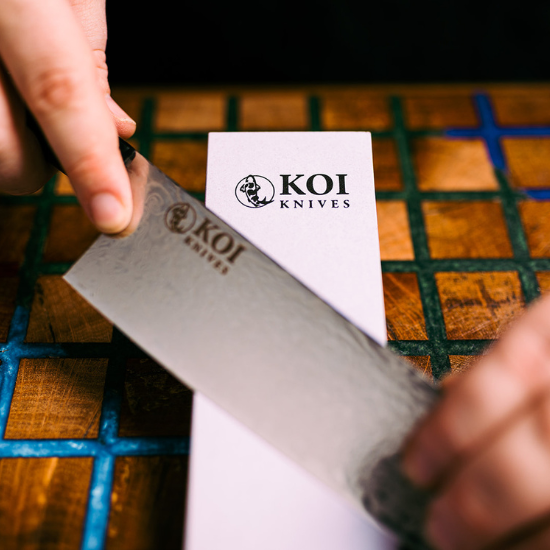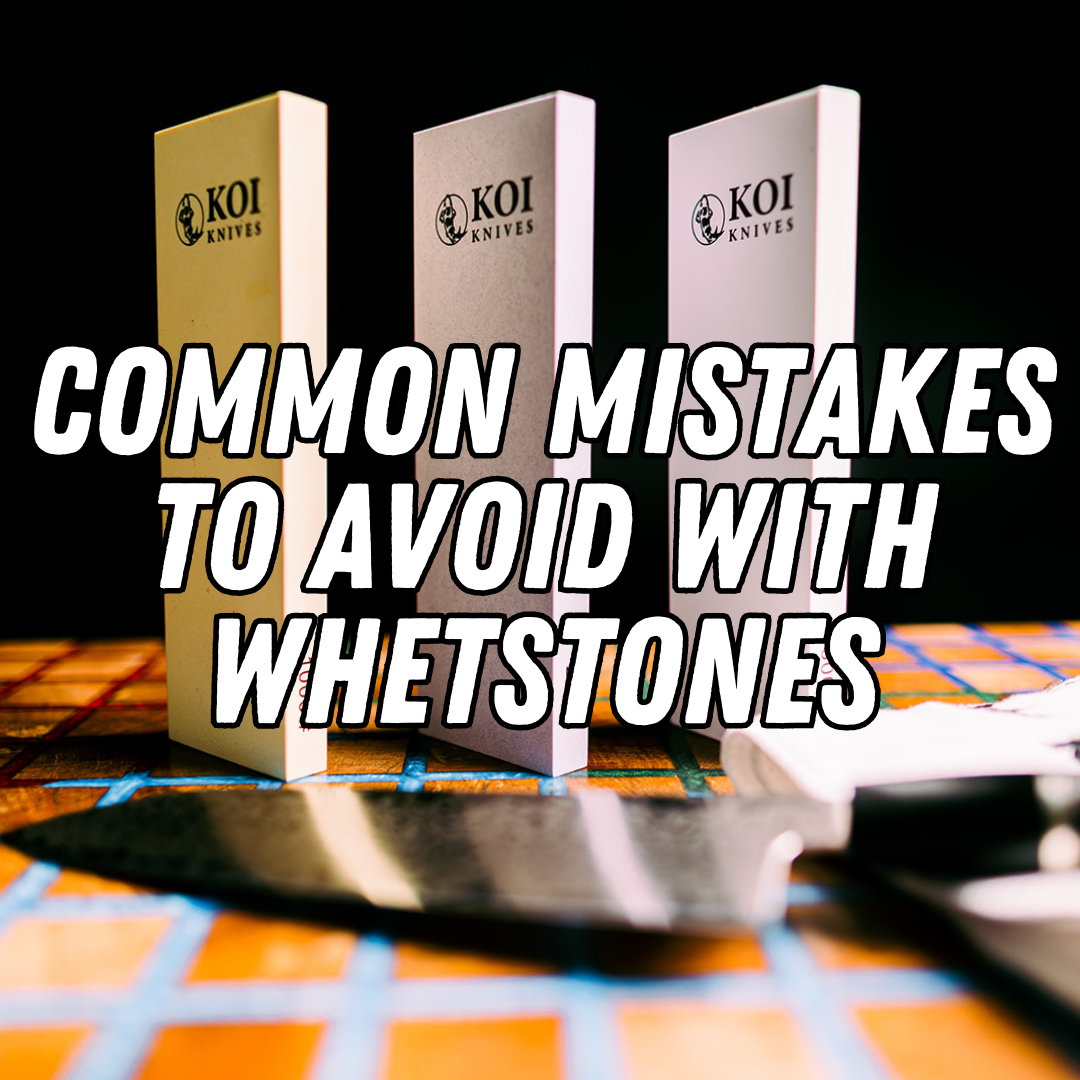Welcome to a world where blades and grit collide, where the ancient art of sharpening Japanese cutlery attains its contemporary essence.
As you embark on this voyage through the art of whetstone sharpening, you extend the life of your prized blades and engage in a tactile ritual, a dance between steel and stone that yields unrivalled precision.
This guide demystifies grit, empowers you to navigate whetstone selection, and reveals the secrets to mastering this revered craft from beginner to expert.
Understanding Grits: Unveiling the Spectrum of Abrasiveness
Welcome to the heart of sharpening wisdom – understanding the enigmatic world of grits. Imagine grits as the sculptors of your blade's destiny, each with a unique purpose.
Low Grit (Coarse) Stones
These gritty heroes are your initial step in revitalising a dulled edge or transforming a neglected blade into a masterpiece. Coarse stones are your artists for edge repair and initial shaping, where they chisel away nicks and reshuffle the blade's geometry. When selecting, prioritise durability and consider how much metal removal your blade demands.
Medium Grit Stones
Like expert painters refining their strokes, medium grit stones ensure your edge is a symphony of sharpness. They dance between coarseness and finesse, ideal for regular sharpening and edge refinement. A medium grit stone is a versatile workhorse, striking the right balance between speed and precision.
High Grit (Fine) Stones
Enter the world of grace and finesse. High-grit stones are the master finishers, bringing your blade to the pinnacle of sharpness. They improve edge retention by sweeping away any burrs left behind. These stones are also excellent for honing and polishing, adding the finishing touches to your blade's symphony.
The art of grit selection is similar to a chef's palette, where the proper mix of flavours makes a gourmet masterpiece. Your Japanese knife is deserving of the same treatment. Grit selection is a dance between the state of your knife, your skill level, and the desired edge profile.
Navigating the Whetstone Selection Process
Navigating the vast world of whetstones might seem overwhelming, but fear not—let's break it down together. Your choice depends on various factors that we'll explore.
Knife Type and Steel Compatibility
Different knives demand different grits. Stainless steel knives often favour finer grits, while carbon steel counterparts can handle coarser stones. Know your blade's personality.
Skill Level and Experience
Are you a novice or a seasoned sharpener? For beginners, a versatile medium grit stone is a friendly starting point. Advanced users might fancy higher grits for precision honing.
Frequency of Use and Maintenance Routine
Do you slice through ingredients daily or occasionally? Frequent use calls for a stone that balances sharpening and refining. Light users might opt for more refined stones.
Budget Considerations: Finding the Right Balance
Whetstones span a spectrum of prices. But remember, quality isn't always linked to the price tag. Strike a balance that suits your needs.
The Art of Whetstone Technique: Mastering the Craft
Sharpening a blade on a whetstone is not just a task; it's an art form that demands your attention and care. As you embark on this journey, remember that practice and patience are your guiding stars.
Preparing the Whetstone: Soaking vs. Splash-and-Go
Before the rhythm begins, decide whether your whetstone prefers a luxurious soak or a quick splash. Each method has merits; the soak grants gradual hydration, while the splash-and-go beckons immediately.
Angle Control: Achieving the Perfect Edge
Imagine a sweet spot where the angle between the blade and the stone sings harmoniously. For many Japanese knives, this sweet serenade hovers around 15 degrees. But let your knife's geometry guide you, and let muscle memory bloom.
Pressure and Strokes: Technique Matters
Apply enough pressure to make the stone sing, then let the strokes commence. The gentle push and pull – a dance of finesse – whisper secrets of keen edges. Like a potter moulding clay, you mould your blade, letting the stone's embrace breathe life into sharpness.
Flattening the Whetstone: Ensuring Consistency
A flat stage begets a flawless performance. Regularly tend to your whetstone's surface, removing the valleys and peaks. Honing your skills on a level platform ensures that your blade's journey remains true, unveiling the potential within.
Beyond the Basics: Special Considerations and Advanced Techniques
Let's explore special considerations and advanced techniques to elevate your Japanese knife maintenance as you sharpen your skills.
Single Bevel Knives: Unique Sharpening Approaches
Single-bevel knives, often found in traditional Japanese blades, require a slightly different technique. Focus on the flat side, using gentle, controlled strokes to maintain the delicate edge geometry. Keep the angle precise and employ light pressure for optimal results.
Convex Edges: Tailoring Technique for Curved Blades
Adapt your approach to knives with convex edges, like many Santoku knives. Work with small circular motions, following the curve of the blade. Gradually refine the edge by alternating sides, ensuring a symmetrical finish.
Nagura Stones and Honing Compounds: Enhancing Finishing Touches
Consider incorporating nagura stones or honing compounds to achieve an exquisite mirror-like polish. These additives refine the sharpening surface, intensifying the gleam of your blade. Apply them sparingly, working them into the whetstone with circular motions before sharpening.
Remember, each knife has its unique personality, and practice is your greatest ally. Feel the rhythm of the stone against the steel, visualise the edge taking form, and embrace the tactile connection.
Whetstone Care and Maintenance: Ensuring Longevity
Caring for your whetstones is just as crucial as mastering your sharpening technique. Below are some essential care tips to keep your whetstones performing at their best.
Cleaning and Drying: Preventing Residue Build-up
After each sharpening session, ensure your whetstone is clean and free from metal shavings and debris. A gentle brush and warm soapy water work wonders. Rinse thoroughly, and let it air dry completely before storing. This prevents contamination of future sharpening sessions.
Flattening and Levelling: Keeping Your Whetstone Flat
Over time, your whetstone might develop slight indentations from repeated use. Regularly flatten it using a flattening stone or diamond plate. This maintains a consistent sharpening surface, ensuring precise results.
Proper Storage: Safeguarding Your Investment
Store your whetstones in a cool, dry place away from direct sunlight. Avoid stacking or keeping moisture in a damp environment to prevent moisture absorption. While sharpening, a dedicated whetstone holder or a clean, dry cloth beneath the stone can also help protect its surface.
Conclusion
Low grits repair and shape, medium grits refine, and high grits provide that flawless, polished finesse.
Whetstone sharpening is more than just a way to keep your knives sharp; it's an artistic journey that forges a bond between you and your blades. Each stroke sharpens both the edge and your mastery.
With this understanding, you can effortlessly orchestrate the symphony of grits, revealing the secret power of your prized Japanese knives.




